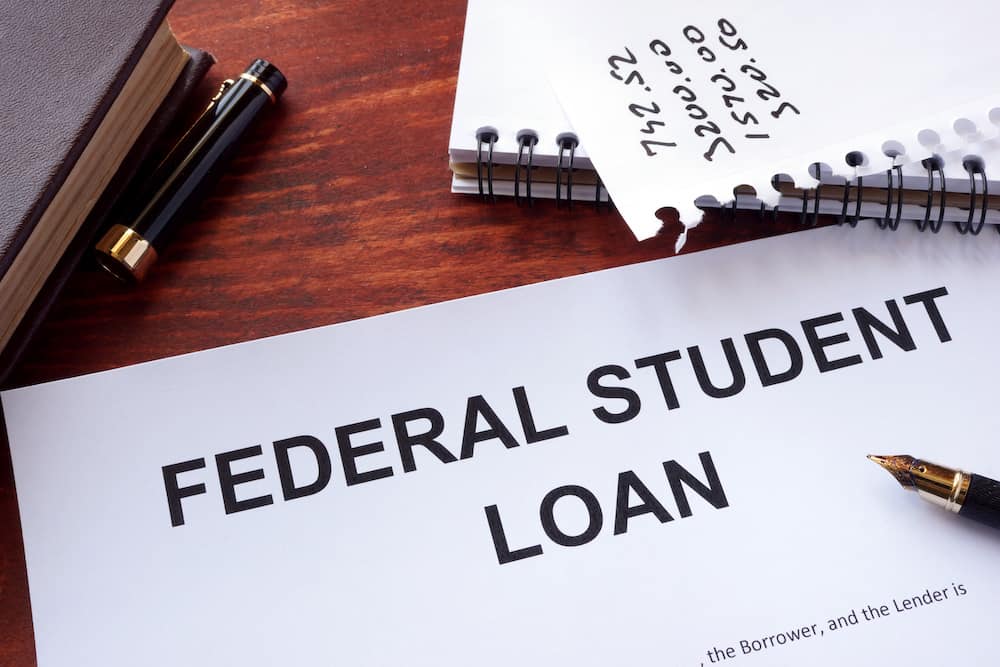Refinancing Federal Student Loans With A Private Lender: What You Need To Know

Table of Contents
Understanding the Pros and Cons of Refinancing Federal Student Loans
Refinancing your federal student loans with a private lender involves replacing your existing federal loans with a new private loan. This can be a powerful tool, but it's crucial to weigh the potential advantages against the disadvantages before proceeding.
Potential Benefits:
- Lower Monthly Payments: Refinancing can significantly lower your monthly payments, freeing up cash flow for other financial priorities. This is often achieved through extending the loan term, though this will increase the total interest paid over the life of the loan.
- Lower Interest Rates: Securing a lower interest rate than your current federal loan rate can save you thousands of dollars in interest over the life of the loan. This is particularly beneficial if you have variable-rate federal loans and want the stability of a fixed rate.
- Shorter Repayment Terms: While extending the loan term can lower monthly payments, choosing a shorter repayment term can lead to significant long-term savings on interest.
- Switching to a Fixed Interest Rate: If you currently have variable-rate federal loans, refinancing to a fixed-rate private loan can protect you from interest rate fluctuations and provide predictable monthly payments.
- Streamlining Multiple Loans into One: Consolidating multiple federal student loans into a single private loan simplifies repayment, making it easier to track your progress and manage your debt.
Potential Drawbacks:
- Loss of Federal Student Loan Benefits: This is arguably the most significant drawback. Refinancing typically means losing access to valuable federal benefits such as income-driven repayment plans (IDR), deferment and forbearance options, and potential loan forgiveness programs. These are safety nets that can be crucial during periods of financial hardship.
- Higher Interest Rates (if not carefully shopped around): While refinancing can lead to lower rates, failing to thoroughly compare offers from multiple lenders could result in securing a higher interest rate than your current federal rate.
- Risk of Higher Fees: Private lenders often charge origination fees and other fees that can add to the overall cost of the loan.
- Potential for Less Flexible Repayment Options: Federal student loans generally offer more flexible repayment options than private loans.
- Impact on Credit Score During the Application Process: The lender will perform a hard credit check, which can temporarily lower your credit score.
Eligibility Requirements for Private Student Loan Refinancing
Private lenders have specific criteria for approving refinancing applications. Meeting these requirements is vital for securing favorable terms.
Credit Score and History:
A strong credit score and a positive credit history are paramount. Lenders typically prefer applicants with a credit score of 670 or higher. A higher credit score usually translates to better interest rates and more favorable loan terms.
Debt-to-Income Ratio:
Your debt-to-income (DTI) ratio – the percentage of your gross monthly income that goes towards debt payments – plays a crucial role. A lower DTI ratio significantly improves your chances of approval and can help you secure a lower interest rate.
Income and Employment Stability:
Lenders need assurance that you have a stable income and employment history to confidently predict your ability to repay the loan. Consistent employment is a major factor in the approval process.
Co-Signer Options:
If you don't meet the lender's eligibility criteria on your own, consider adding a co-signer with a strong credit history. A co-signer shares the responsibility for repayment, improving your chances of approval.
Comparing Private Lenders and Finding the Best Rates
Finding the best rate requires diligent research and comparison. Don't settle for the first offer you receive.
Researching Different Lenders:
Several reputable private lenders offer student loan refinancing. Research and compare offers from multiple lenders, including companies like SoFi, Earnest, and Discover.
Interest Rates and Fees:
Carefully compare the advertised Annual Percentage Rate (APR), which includes interest and fees, not just the interest rate itself. Look out for origination fees and prepayment penalties.
Repayment Terms and Options:
Evaluate the different repayment terms and options offered. Consider the trade-offs between lower monthly payments (longer loan terms) and minimizing total interest paid (shorter loan terms).
Customer Reviews and Reputation:
Check online reviews and ratings from reputable sources to gauge the lender's customer service, responsiveness, and overall reputation.
The Refinancing Process: Step-by-Step Guide
Refinancing your federal student loans involves a series of steps. Following this guide will help ensure a smooth process.
Check Your Credit Report:
Before applying, review your credit report for any errors that could impact your application. Dispute any inaccuracies with the credit bureaus.
Compare Lenders and Rates:
Use online comparison tools or contact lenders directly to gather multiple quotes and compare offers side-by-side.
Complete the Application:
Gather the necessary documents (proof of income, employment history, etc.) and complete the lender's application thoroughly and accurately.
Review and Accept Loan Terms:
Carefully review the loan agreement before accepting. Understand the terms, interest rate, fees, and repayment schedule.
Loan Disbursement and Repayment:
Once approved, the lender will disburse the funds, and you'll begin making monthly payments according to the agreed-upon schedule.
Conclusion
Refinancing federal student loans with a private lender can offer significant benefits, such as lower monthly payments and interest rates. However, it's critical to understand the potential loss of federal student loan benefits. Thorough research and careful comparison of lenders are essential. Weigh the pros and cons, assess your eligibility, and choose a lender with a strong reputation and favorable terms. Don't rush the decision; take your time to make an informed choice that aligns with your financial goals. Ready to explore your options for refinancing federal student loans with a private lender? Start comparing rates today!

Featured Posts
-
 Fortnite Cowboy Bebop Freebies A Guide To Obtaining Them
May 17, 2025
Fortnite Cowboy Bebop Freebies A Guide To Obtaining Them
May 17, 2025 -
 Fortnite In Game Store Epic Games Faces Fresh Legal Action
May 17, 2025
Fortnite In Game Store Epic Games Faces Fresh Legal Action
May 17, 2025 -
 New Emirates Id Card Fee For Newborn Babies In Uae March 2025
May 17, 2025
New Emirates Id Card Fee For Newborn Babies In Uae March 2025
May 17, 2025 -
 Jalen Brunsons Injury Exposes Knicks Biggest Weakness
May 17, 2025
Jalen Brunsons Injury Exposes Knicks Biggest Weakness
May 17, 2025 -
 Novak Djokovic Miami Acik Finalinde Rakipleri Ve Yolculugu
May 17, 2025
Novak Djokovic Miami Acik Finalinde Rakipleri Ve Yolculugu
May 17, 2025
